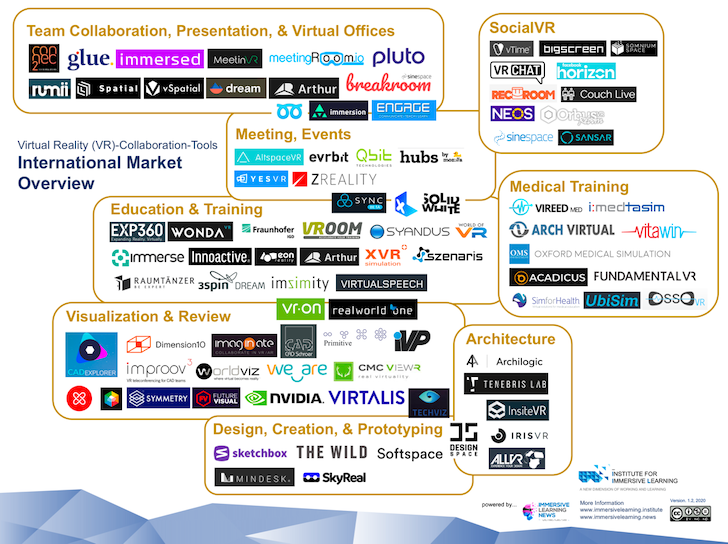Table of Contents

What is the metaverse? What will it signify for marketing and advertising and martech?
Last 7 days, I led a roundtable discussion with 3 leaders of martech organizations — Acquia CMO , Wistia CEO , and Persado COO Assaf Baciu — to look at these thoughts from several distinct perspectives. (With kudos to at Inkhouse PR for arranging this session.)
The video of our discussion is incorporated down below, but listed here the primary details I took away from our session:
Takeaway #1: The metaverse is not (just) hype.
The metaverse is by now listed here. Essentially, dozens of metaverses are presently right here right now. Yes, we’re dwelling in a multiverse, Spider-Guy. They are mainly monitor-dependent gaming worlds these kinds of as Roblox and Fortnite. Take note that gaming is at present a $180 billion world industry, and in-recreation advertising is expected to be a $56 billion global market by 2024. I just examine a stat from McKinsey that 200 million every month users invest an normal of 2.5 several hours a working day on Fortnite and Roblox.
This is a legit channel these days. It will be a significant channel in the potential.
Now, only a modest proportion of online games offer immersive 3D encounters by way of VR gadgets right now. But the technologies is advancing fast. Metaverses are enhancing iteratively about us. And even though the hoopla need to be taken frivolously, there is fire listed here, not just smoke.
At the starting of this yr, I noted a few big innovation developments in martech — commerce, Big Ops, and no-code. Not only was the metaverse not incorporated in those best three, I cited it as “still early” in 2022 underneath an omissions heading. Relative to the scale of my best picks, I continue to consider that’s legitimate. But martech moves quickly. What’s an early adopter technological know-how today, quickly becomes a mainstream the greater part technological innovation tomorrow.
1 indication of the scale of the metaverse wave underway is the proliferation of vendors in the house mapped in big and growing landscape graphics — what have I wrought? — these types of as a single by CB Insights, another by NewZoo, and this one particular from Jon Radoff:

(You can argue that it’s the similar phenomenon with blockchain technologies this sort of as cryptocurrencies and NFTs. I’ll get to all those in a minute.)
Takeaway #2: It is a fragmented multiverse.
Emphasizing the point created in passing above: there will not be 1 metaverse. There will be dozens, hundreds, even thousands of them. For advertising and martech, this foretells a large, fragmented landscape.
Of program, martech execs know superior than most that fragmentation breeds its individual answers. As with internet promotion, it is doable that a modest oligopoly of “ad” networks will present a unified interface to treating all these channels as a popular pool — essentially serving as metaverse advert aggregators.
But I put “ad” in offers listed here for the reason that the immersive, interactive nature of metaverse experiences lend on their own to much more novel ways of partaking with an viewers. For occasion, a virtual pop-up stand with in-metaverse expert services, objects, and transactions. The performance offered is very likely to differ widely from a person metaverse to the subsequent. It’s not just billboards and item placement.
I’m sure a set of regular “ad” units will arise. But they are probable to be a lot more different and much more intricate. Assume of them as packaged mini-apps more than static content property. (Indeed, apps within apps — kinda meta.) I imagine this will build a larger sized chance for martech applications that produce, take care of, and distribute meta marketing mods throughout distinct multiverses.
A no-code multiverse promoting platform? Maybe.
Takeaway #3: It is not just entertaining and online games.
Even though video games and other varieties of amusement — this kind of as live shows in the metaverse — are wherever most of the engagement is currently, we currently see specialist use scenarios emerging.
Virtual occasions took off through the pandemic. And though serious-earth functions — fingers crossed — are setting up to reignite, the positive aspects of virtual situations ensure that they will keep on and multiply. They’re much less expensive to generate and to attend, which democratizes who can host them and who can participate. They have a lessen carbon footprint (caveat: assuming we don’t blockchain the heck out of them).
But admittedly, digital functions that are fundamentally just a movie meeting broadcast have their limit on engagement (hello there, Zoom fatigue). A poll of scientists by Character confirmed that 74% needed virtual conferences to go on just after the pandemic — but 69% cited “poor networking opportunities” as their largest drawback.
Additional immersive and interactive conference-like encounters in the metaverse however come to feel a little bit clunky currently, but they have a good deal of room for innovation. They will advantage from the fast development of this technology in the gaming sphere.

Closely connected are digital coaching and collaboration environments. The over landscape from the Institute for Immersive Finding out captures a sample of the platforms providing these abilities today. These blend into unique skilled use conditions for fields these kinds of as architecture and design.
A single seller that engage in a huge but underappreciated job in this now is Autodesk, which supplies state-of-the-artwork resources for making state-of-the-art 3D electronic assets. (A grateful shout-out to them for also contributing to The Stackies previous 12 months. And a reminder that you can nonetheless enter your martech slide in the 2022 Stackies ahead of the close of this month.)

In the world of martech, all of these answers — events, schooling, collaboration, nearly performed commerce for bodily objects and property that can be represented in a far more powerful, immersive vogue — have promise. Current platforms in your stack from DAM to DXP will want to adapt to support these abilities. There will be new products and solutions for at any time-a lot more-sophisticated virtual occasions and mastering activities.
And if you imagined attribution was a tough problem in today’s marketing menagerie, the martech that will arise for attribution in the metaverse will be a total new journey.
Takeaway #4: Native NFTs and cryptocurrencies
In our roundtable dialogue, it was exciting to have both advocates and skeptics on the latest state of NFTs and cryptocurrencies. In total disclosure, I’m still on the fence. I believe the blockchain paradigm has a huge upcoming in a broad selection of applications. The recent wave of cryptocurrencies and NFTs is a lot more of a combined bag of what is real and what is fad, at the very least in my non-ape feeling.
But a position that resonated with me in our dialogue is that the rise of the metaverse is probably to supply a much more indigenous ecosystem in which NFT-like assets have larger indicating and value. So individuals adventurous souls expending massive on virtual merchandise and genuine estate may switch out to be geniuses.
On the other hand, this will count greatly on what metaverse platforms by themselves allow. For all the converse of decentralization, just about all of the metaverse environments currently are working on centralized platforms. Those people platform house owners have incredible manage in excess of what exists inside of their digital reality and the economies that develop inside of them.
While they’re nonetheless equally in a remarkably fluid, early phase of enhancement, there’s a symbiosis concerning these two systems. In a lot of methods, they boost just about every other’s development.
Takeaway #5: The best way to find out is to experiment
Now, as a martech particular person, I’m delicate to the accusation of shiny object syndrome. So I’m most surely not suggesting that you run and reallocate a enormous chunk of your time and funds into the metaverse.
Even so, we learn by undertaking. And arguably a considerably larger danger in one’s vocation is a calcification of considered and diminishing acquisition of new techniques. The metaverse is going to be a significant aspect of our long term in marketing, and that item in our mirror is possibly closer than it appears.
So I was significantly impressed by Chris Savage’s decision to give all of his workforce VR headsets and begin experimenting with making use of them. Considering that Wistia embraced a remote operating setting, it makes a whole lot of perception to attempt new approaches to crew engagement and collaboration. Partly for their direct profit and partly simply because nearly anything but Zoom can be a refreshing crack.
Chris described a couple of the eventualities they performed with, what worked and what didn’t. I’ll allow you listen to immediately from him in the video clip down below.
But at a increased degree, it was a reminder that in a discipline like martech that is consistently switching as this sort of a blindingly quickly speed, investing at least a little bit of time — 5%? — in dabbling with emerging technological know-how is essential to preserve up with the place the industry is headed. Even discovering first-hand what does not operate, at the very least not however, is useful understanding to guideline your thinking for the street ahead.
Don’t just read about it. Consider it.
Here’s the complete video of our roundtable dialogue (or click on this url from electronic mail):

